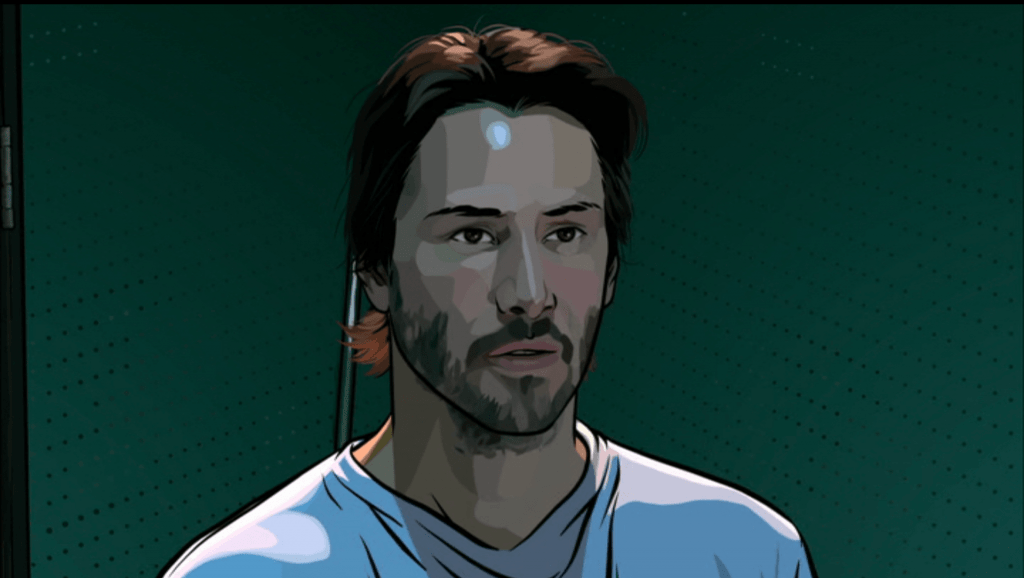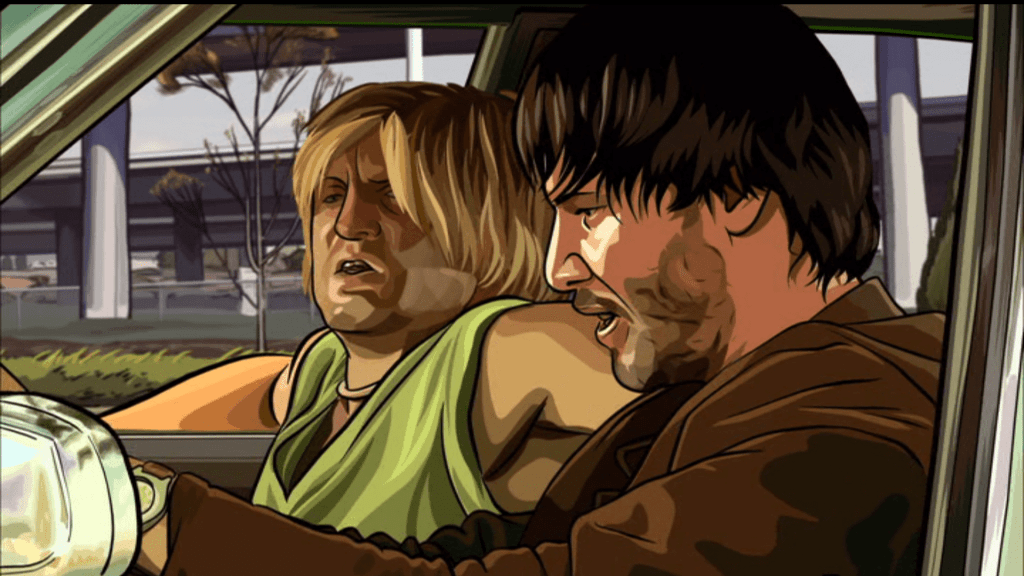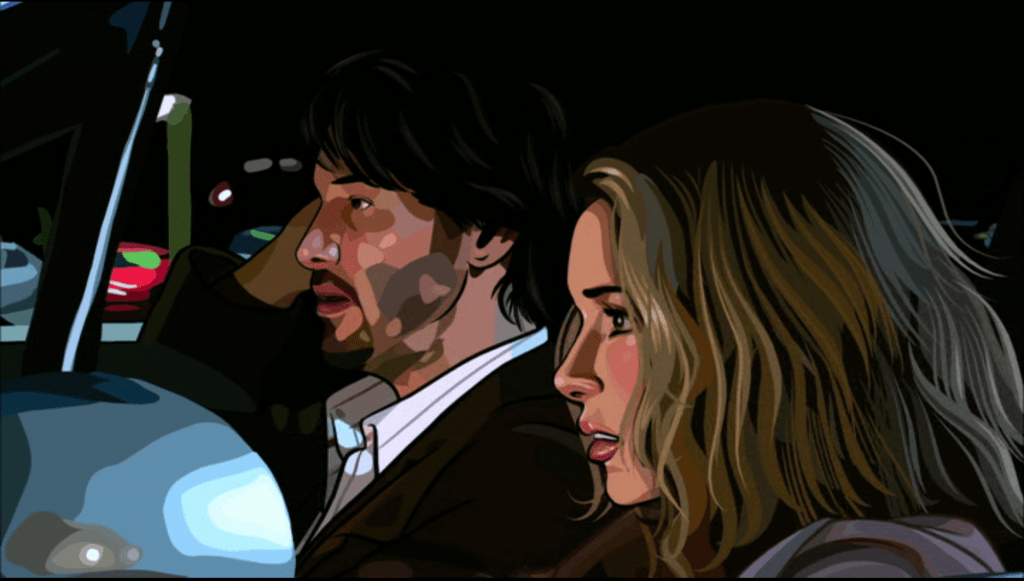
*Contains spoilers! Watch the film before you read!*
Keanu Reeves’ beard proved challenging for the animation team of A Scanner Darkly (Richard Linklater, 2006). It’s patchy and inconsistent, requiring a high-degree of detail work to capture the tonal and textural variations across the actor’s cheek.

A Scanner Darkly is made in an animation style called rotoscoping, which involves filming scenes in live action first for reference and then having an animation team draw on top of it. In the case of Richard Linklater’s two animated films (Scanner and 2001’s Waking Life), this painting is done digitally, but one could paint single-frame cells by hand (the 1982 Tron is a beautifully complicated example that includes hand-painted rotoscoping). Because this “real” reference exists under the animation, rotoscoping can have an uncanny affect, real-ish, but also fantastical.

Linklater’s animation team – led by Sterling Allen – capitalized on this mode of animation through their particular style. Elements in the frame float, loosely anchored to the reality at hand. The effect is not quite as pronounced as Waking Life, which literally dealt with a dream world, but it’s still there. Tonal patches on a character’s skin shift back and forth on the face. A Heineken bottle is rendered 2-dimensionally when Reeves’ character, Fred/Bob/Bruce, places it on a table.
In the DVD commentary track for the film, Linklater shares that he knew he wanted to reprise the Waking Life technique for this Philip K. Dick adaptation because it matched larger philosophical questions Dick was asking. “I mean,” Linklater says, “for the similar reason for [Waking Life], how it works on the mind of the viewer. You’re looking at this going, ‘Is this real?’ … You know, this kind of shifting reality and perspective.”

Which brings us back to Keanu’s beard. It’s not just that the reference of the actor’s face was patchy, it’s also that the animation choices shift from scene to scene, a spectrum of detail that runs from realism to Rorschach. The beard seems like a small detail, but its variability mirrors the character’s unmoored identity.

Inside the scramble suit, Reeves’ is Fred, a police officer who meets with his boss in the office, gives status updates, and talks to community organizations. Inside the suit, we see a close-up of his face with the hairs of the mustache and beard well-defined. Though Fred-in-suit certainly falters, the police officer identity gives him a false sense of structure.

Outside the scramble suit, the character is Bob, an undercover officer posing as a drug user. Bob’s unkempt beard is ever-shifting as Bob’s general state of mind erodes. Sometimes the beard is represented in patches of color, beautiful in its abstractness, refusing to maintain shape.

During the DVD commentary track, one of the commenters (maybe Reeves, but it’s difficult to distinguish the voices at times) says, “Who are we within the uniforms and costumes that we wear?” The rotoscoped animation works like another layer of costuming for the actors, emphasizing how unstable one’s sense of identity can be.

But there’s one more layer to this. In two sections of the film, Keanu is Bruce and has no beard at all. He is clean-shaven in the flashback to his suburban family life (that is hinted by Fred’s boss, Hank, may be a fantasy that never happened), and he is clean-shaven again as the docile resident of the drug treatment facility. Clean-shaven generally symbolizes living clean, but it’s also associated with bland identity. Fred bemoans his cookie-cutter life with its shiny red mower. There’s a reason he took on this undercover assignment. He needed to scramble his sense of self.

He just scrambled too much, and in the end his drug use obliterated his self, leaving him a husk attending to husks, devoid of inner conflict and any sense of personal identity. His face is clean and his hair is slicked back neatly. He will not cause trouble again.
IU Cinema will screen A Scanner Darkly on March 30 at 7 pm on a double bill with the short film The Sound of Science: The Brain. Composer Graham Reynolds is scheduled to be present.

Laura Ivins loves stop motion, home movies, imperfect films, nature hikes, and Stephen Crane’s poetry. She has a PhD from Indiana University and an MFA from Boston University. In addition to watching and writing about movies, sometimes she also makes them.